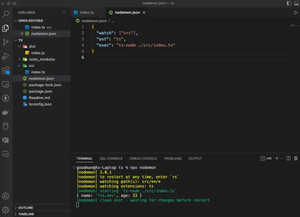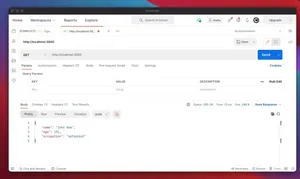Handling errors efficiently is crucial in any application. In Mongoose, getting error handling right ensures both database integrity and a good developer experience. This guide will walk you through the various error types in Mongoose and demonstrate how to handle them with the latest JavaScript features.
Error Handling Basics
In Mongoose, like in any database middleware, operations can fail for various reasons. Wrapping database operations within try/catch blocks and knowing the types of errors to expect are fundamental parts of error handling.
const mongoose = require('mongoose');
const connectToDB = async () => {
try {
await mongoose.connect('mongodb://localhost:27017/myapp');
} catch (error) {
console.error('Database connection error: ', error);
}
};
Validation Errors
Mongoose provides built-in schema validation. When data does not match the schema, a validation error occurs.
const userSchema = new mongoose.Schema({
name: {
type: String,
required: true
},
age: {
type: Number,
min: 18
}
});
const User = mongoose.model('User', userSchema);
const saveUser = async (userData) => {
try {
const user = new User(userData);
await user.save();
} catch (error) {
if (error.name === 'ValidationError') {
for (field in error.errors) {
console.log(error.errors[field].message);
}
} else {
console.error('Unexpected error:', error);
}
}
};
Handling Cast Errors
Incorrectly formatted ObjectId’s or other types can lead to cast errors. This typically happens when querying with an invalid type for an expected parameter.
const getUser = async (userId) => {
try {
const user = await User.findById(userId);
console.log(user);
} catch (error) {
if (error.name === 'CastError') {
console.error('UserId is not a valid ObjectId:', error);
} else {
console.error('Unexpected error:', error);
}
}
};
Duplicate Key Errors
When a unique index violation occurs in Mongoose, it throws a duplicate key error. Handling these correctly is crucial for data integrity and user feedback.
userSchema.index({ email: 1 }, { unique: true });
const createUser = async (userDetails) => {
try {
const newUser = new User(userDetails);
await newUser.save();
} catch (error) {
if (error.code === 11000) {
console.error('Duplicate key error:', error);
} else {
console.error('Unexpected error:', error);
}
}
};
Connection Errors
Handling connection errors is important for the resilience of the application. It is important that the application responds gracefully when the database is temporarily unavailable.
mongoose.connection.on('error', (error) => {
console.error('Connection error:', error);
});
For more fine-grained error handling, middleware functions such as pre-hooks and custom error classes can be used to manage specific error scenarios and encapsulate error logic.
Conclusion
Mongoose provides various ways to handle errors arising from database operations. Implemented efficiently, these techniques ensure the robustness of your application by dealing quickly and informatively with unexpected conditions.

